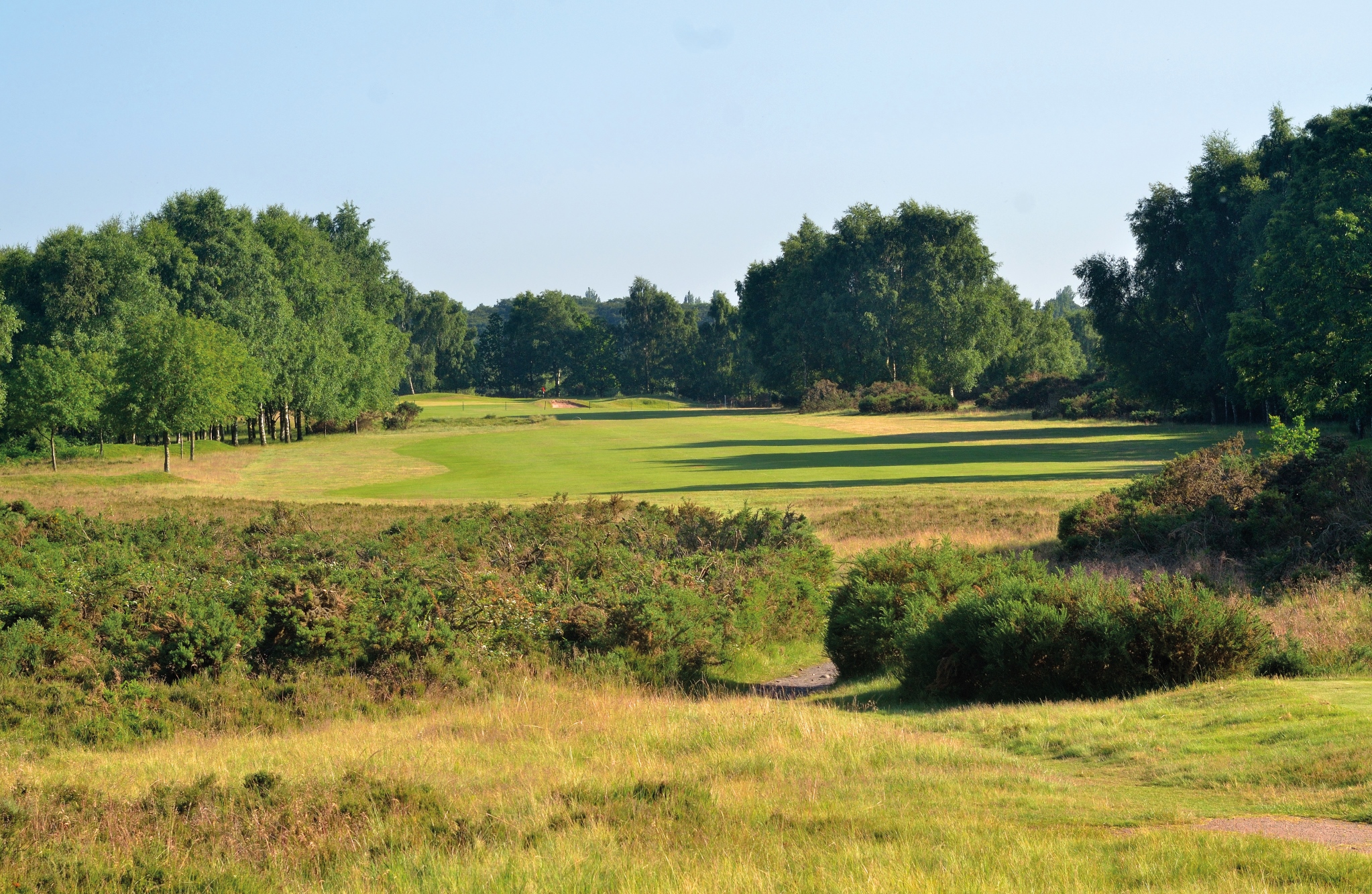
Little Aston
Little Aston | NCG Top 100s : England Golf Courses
Rankings
1st
49th
106th
Little Aston has long been known as one of the premier golf courses in the West Midlands, and it is not difficult to understand why it is held in such high regard.
With Harry Vardon has the designer, and Harry Colt as the man who made changes for two decades, the course has the touch of legends behind it.
It plays through the trees, and although it offers up chances, it can also take shots away from you in a heartbeat.
Visit the Little Aston website here.
Go Back To NCG's Top 100s Homepage.
Advertisement

A Brief History of Little Aston
Originally formed in 1908, Little Aston is one of the oldest clubs in the West Midlands. The great Harry Vardon helped to design the original layout of the golf course.
Harry Colt was then the club’s course architect for two decades, first coming to work on the layout in 1911. The course has since been tweaked and extended, with the biggest change coming at the 17th – the putting surface being moved more into the water.
Over the last four decades, the club has played host to the English Women’s Amateur Championship, Boys Amateur Championship, the Women’s Home Internationals and the English Amateur Championship – with a certain Tommy Fleetwood winning the latter in 2010 at Little Aston.
Little Aston Review | NCG Top 100s: England
Advertisement

Little Aston is a stunning golf course, played amongst the trees and with plenty of outstanding holes for you to savour during a round of golf. The course is essentially only as hard as the golfer chooses to make it. There are nearly always ways to avoid serious trouble, yet one is asked to take risks on a great many of the holes. Add in the fact that the course plays at more than 6,800 from the tips, and there is danger to be avoided.
It begins with a tricky opener, played as a slight dog-leg left, and a hole that narrows the closer you get down to the green. The surface is guarded by three bunkers, and a par is a good score to get your round going. Although arrow straight, the 2nd – at 450 yards – is one of the tougher holes on the course, and it is followed by the par 5 3rd. With trees on both sides, and an array of sand traps dotted down the hole, this 520-yard hole is no rest. Six traps within the last 50 yards add to the difficulty.
It might surprise you, but at just 317 yards, the 4th is actually the Stroke Index 1 hole at Little Aston. A large cross bunker halfway down the hole has to be avoided, while the green is small and out of bounds lurks to the left of the green. The opening par 3 comes next, at the 5th, which is another hole with plenty of sand guarding the putting surface. It is only 160 yards in length, but it still plays pretty tough. A trio of tricky par 4s come to you next, with the last of those running down the boundary edge of the property, bringing in out of bounds on the left side once more.
The closing hole on the front nine is the longest of the three par 3s at Little Aston. 9 plays up to 193 yards from the tips, with your tee shot going through a funnel of trees before it opens out at the green. The 10th travels demandingly uphill as well as being a double-dogleg par 4. 11 then plays the opposite way, going back down the slope, and turning slightly left after your tee shot. The 12th is the shortest of the three par 5s, at just 485 yards, but that doesn’t necessarily mean going for the green in two is the right options. To the left of the green sits a water hazard filled with lily pads. It looks gorgeous, but you don’t want to hit your ball into it. Lay up, play on and take a par.
The last par 3 comes at 13, a tricky 180-yard hole than requires your full attention. 14 is another short par 4, which relies on huge and well-placed bunkers to provide interest and strategy. A sharp dog-leg right means positioning is key off the tee. The 15th is the longest hole on the property, coming in at just shy of 550 yards. That will make it a three shotter for most, while there are carefully placed fairway bunkers throughout the hole. 16 follows, and it is a testing par 4 which plays as a dog-leg to the left. Five bunkers by the green kick off the closing stretch.
The 17th is Little Aston’s signature piece. At 380 yards, it doesn’t seem like too much, but the placement of the green is the all-important piece to the 17th's puzzle. Following a drive to a wide fairway, golfers then have to play their approach to a green that sits in the lake. Water surrounds the green on three sides, so short is the only bail out. The closing hole tees off from alongside the water, and plays back towards the clubhouse. At 400 yards, the closing par 4 is another tricky one, especially with a huge cross bunker that sits in front of the green.
Our Panellists Notes for 2025
Dan Murphy: A fitting rise for a club that has worked hard in recent years on architectural and presentational improvements. Our panel have loved what they have seen.
Sean Arble: Little Aston is essentially only as hard as the golfer chooses to make it. There are nearly always ways to avoid serious trouble yet one is asked to take risks on a great many of the holes
Steve Watton: Arguably England’s premier traditional parkland with a hint of heathland. Beautiful feel from the moment you arrive. Bunkers, bunkers everywhere!
Greg Webber: A variety of holes which provide a strong test and are a pleasure to play
Read more about our panellists here.
Advertisement

FAQs about Little Aston
Where is Little Aston located?
Little Aston is based in the West Midlands, within close proximity to the city of Birmingham. England’s ‘Second City’ is less than ten miles to the south of Little Aston, while Wolverhampton and Walsall are also close by. The club sits just off the junction between the A452 and A454, while the M6 and M6 Toll are both within five miles from the entrance to the golf club.
Blake Street and Butlers Lane are the two nearest train stations to Little Aston, both within just a couple of miles of the golf club. They both sit on the line which runs between Bromsgrove and Lichfield Trent Valley, also calling in at Birmingham New Street Station. For international visitors, Birmingham Airport is just 15 miles to the southeast of Little Aston Golf Club, with both East Midlands and Manchester Airport – the latter being the busiest airport in the United Kingdom outside of London – are both within 90 minutes as well.
Are there any other NCG Top 100s: England venues nearby?
Along with Little Aston, the West Midlands has plenty of high quality golf to offer. Sutton Coldfield is just a stone’s throw away from Little Aston, while Beau Desert, Blackwell, Enville (Highgate) and The Belfry's Brabazon Course are all situated around the city of Birmingham.
What golf facilities does Little Aston offer?
The venue has a practice area that sits between the 16th and 17th holes, that includes space to hit balls, and a short game area. Off the course, Little Aston’s party piece is its glorious putting green. Unlike 99% of practice surfaces, the green at Little Aston has heather and gorse on it, providing putting lanes for golfers to use. If you do knock it off the green and into the heather, you won’t be the first and you certainly won’t be the last.
What are the green fees at Little Aston?
The price of a green fee at Little Aston changes throughout the year, depending on the season. It is also different depending on whether it is a weekday or weekend.
For more information on current green fees at Little Aston visit their website here.
Visit the Little Aston website here.
Go Back To NCG's Top 100s Homepage.
Course Reviews

0.0 | 0 reviews



